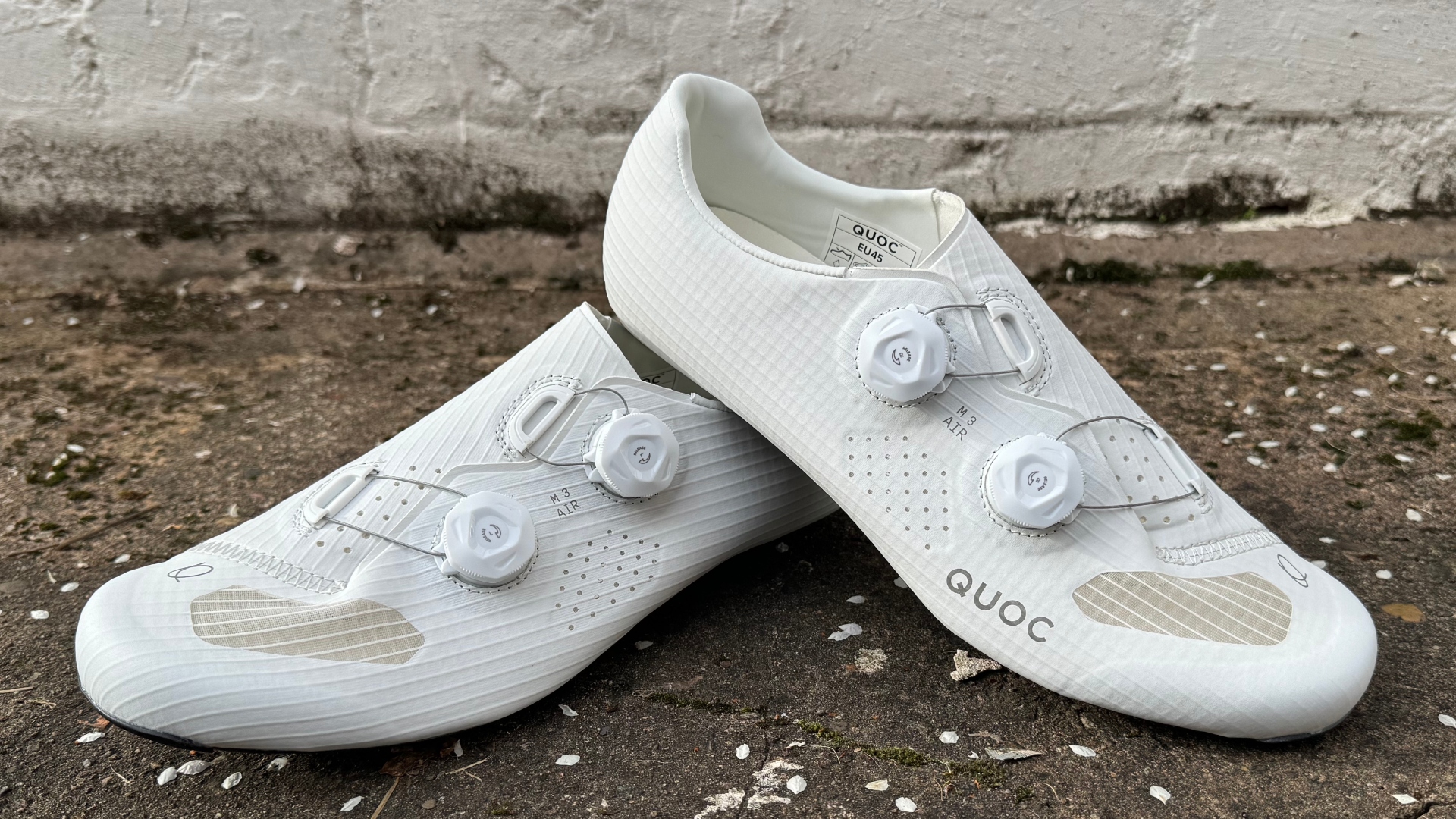
The Quoc M3 Air shoes build on the brand’s existing Mono II, adding some interesting new updates and refinements. The same very stiff, hand-laid unidirectional carbon fibre outsole is used to maximise power transfer, while the tongueless wraparound design is carried over, as is the replaceable heel grip.
The M3 Air increases the size of the toe box to better fit more foot sizes, while also reducing hotspots on the foot. More additions to aid comfort include a ball-of-foot pressure release point in a vibration-damped insole. This new insole also includes adjustable arch support for low, medium and high arches.
The uppers are made using a polyurethane leather substitute, with several mesh panels to improve the ventilation and breathability of the shoes. Two retention dials provide a parallel lacing across the foot, and are used to provide a secure fit with the dials offering micro-adjustments for tightening, and a twist-to-release function to remove the shoes easily. The cleat bolting pattern is a three-bolt. with fore and aft adjustment. Claimed weight for a single size 42 is 242g, while the size 45s on test came out at 253g per shoe.
Quoc - the skinny on the brand
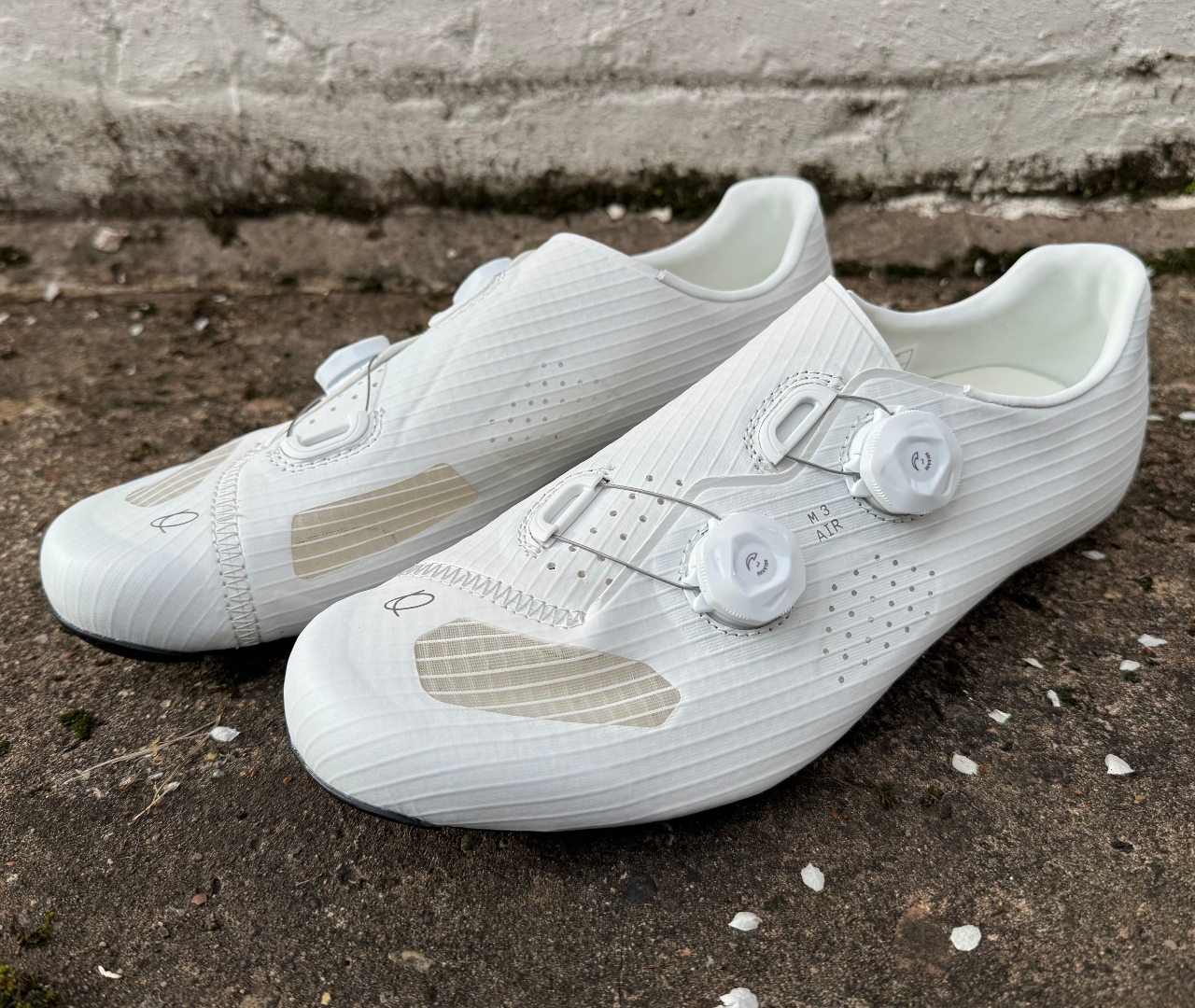
Quoc was founded in 2009 as an independent British brand, balancing performance and comfort with its shoes. It is environmentally focused, uses eco-friendly materials and works with Tree Nation to plant a tree for each shoe made.
Quoc paints itself as a maverick brand that operates outside of the mainstream, both in terms of marketing and product development.
The ride
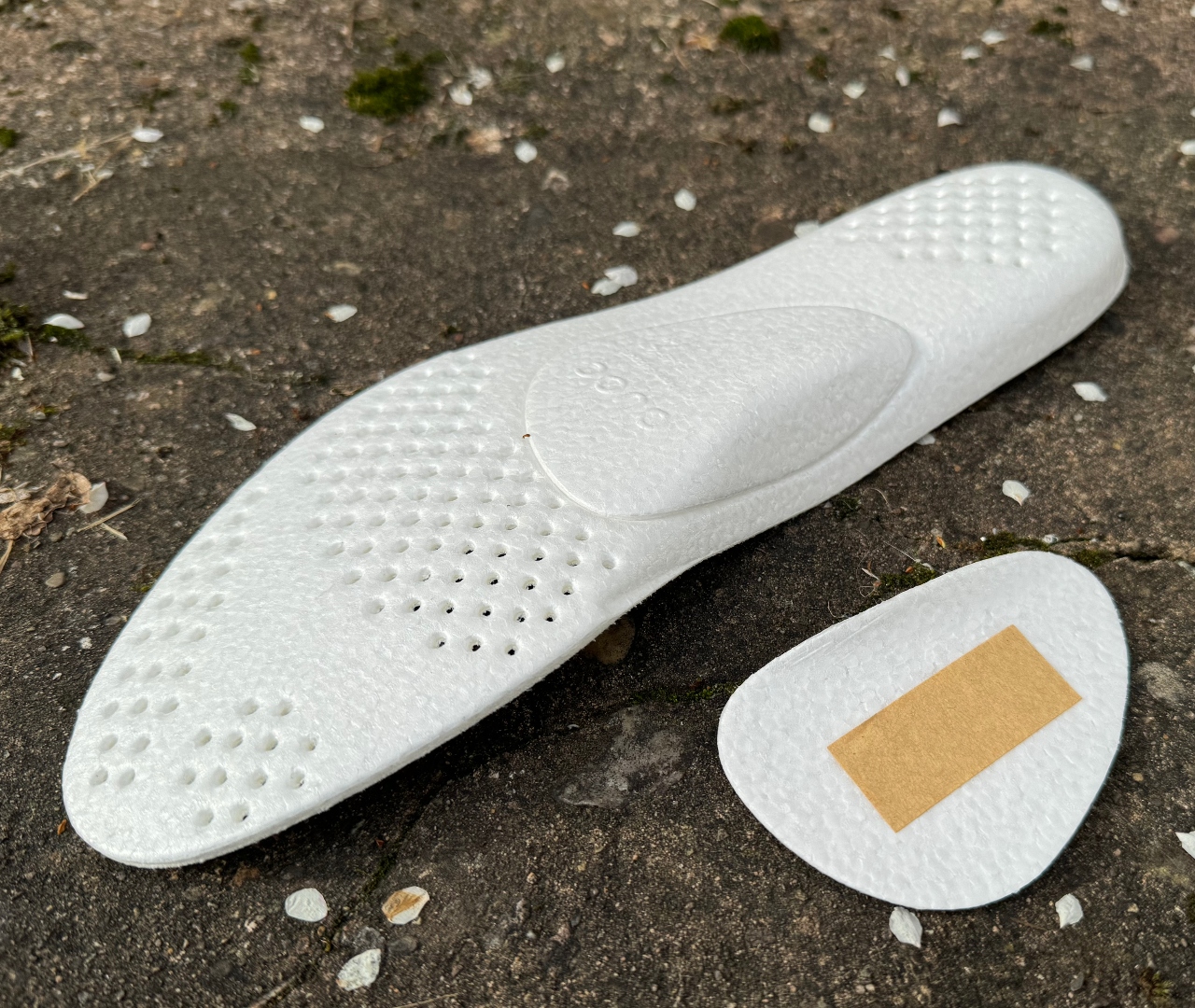
Opening the box to the Quoc M3 Air shoes I was pleasantly surprised to see the adjustable insoles. A gripe I have with many shoes is that the supplied insoles are often quite flat, so the opportunity to fit higher arch support out of the box – there’s a choice of three arch inserts - was ideal. Without decent arch support, I often find my knee collapses in during the pedal stroke.
Fitting the cleats was easy, and I was able to get the same position as I do on my regular shoes. The tongueless design is another nice touch as it makes getting the shoes on very straightforward. The two dials offer a good level of micro adjustment when tightening the shoes up, and a twist to release function is great for easy removal. However, I prefer the BOA Li2 design which allows adjustments in both directions and features a pull to release function.
Given the recent horrid weather and the shoes being a brilliant white, I gave them their first outing indoors on the turbo. Mixing between easier rides and some Zwift races let me experience their general comfort, as well as the power transfer from their stiff soles.
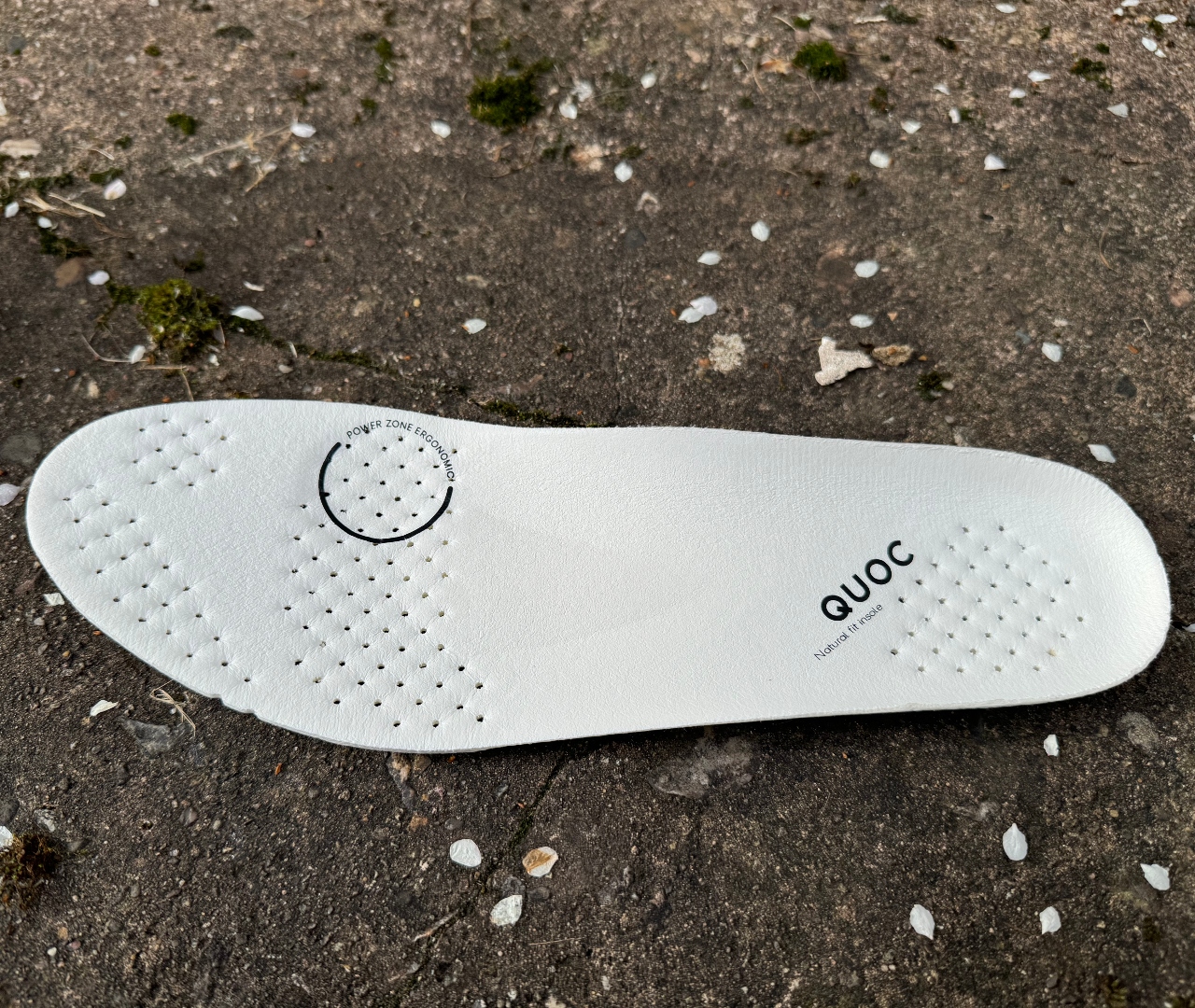
On the steadier, easier rides, the shoes were incredibly comfortable. With enough pressure release at the ball of my foot and the generous arch adjustment, they provided a great mix of support and comfort, especially around my toes.
The mesh panels also did very well at keeping my feet cool, even with fairly limited venting on the sole of the shoe. Ramping up the intensity with some races, the shoes performed brilliantly when it came to power transfer. Pushing down on the pedals there was no point when I felt I needed more stiffness in the shoes. The only issue came when sprinting, because the dials don’t clamp down quite as hard as I like, and the heels were not the most secure around my ankles (which are quite narrow to be fair). For flat out sprinting I prefer something a bit more clamped down.
Riding with the shoes outside, performance is similarly impressive. For big power efforts they are brilliant, though out of the saddle the heel security is not as locked in as I’d normally like. For the most part, though, the heel cup performs well enough.
The vibration dampening insole is useful when out on the road, and for steadier efforts the shoes are really comfortable. However, for extended periods of pushing hard on the pedals and rougher road surfaces, the stiff insole and carbon outsole can feel hard on the foot. This is where some micro adjustment to loosen the shoes could be useful.
Of course, most race shoes are super stiff, so there’s always going to be a compromise between comfort and performance. The fit is wider than a lot of shoes I’ve tried, from brands such as DMT, Shimano, Fizik and Sidi, however not quite as wide as the Specialized 7 last that I’m used to.
Value
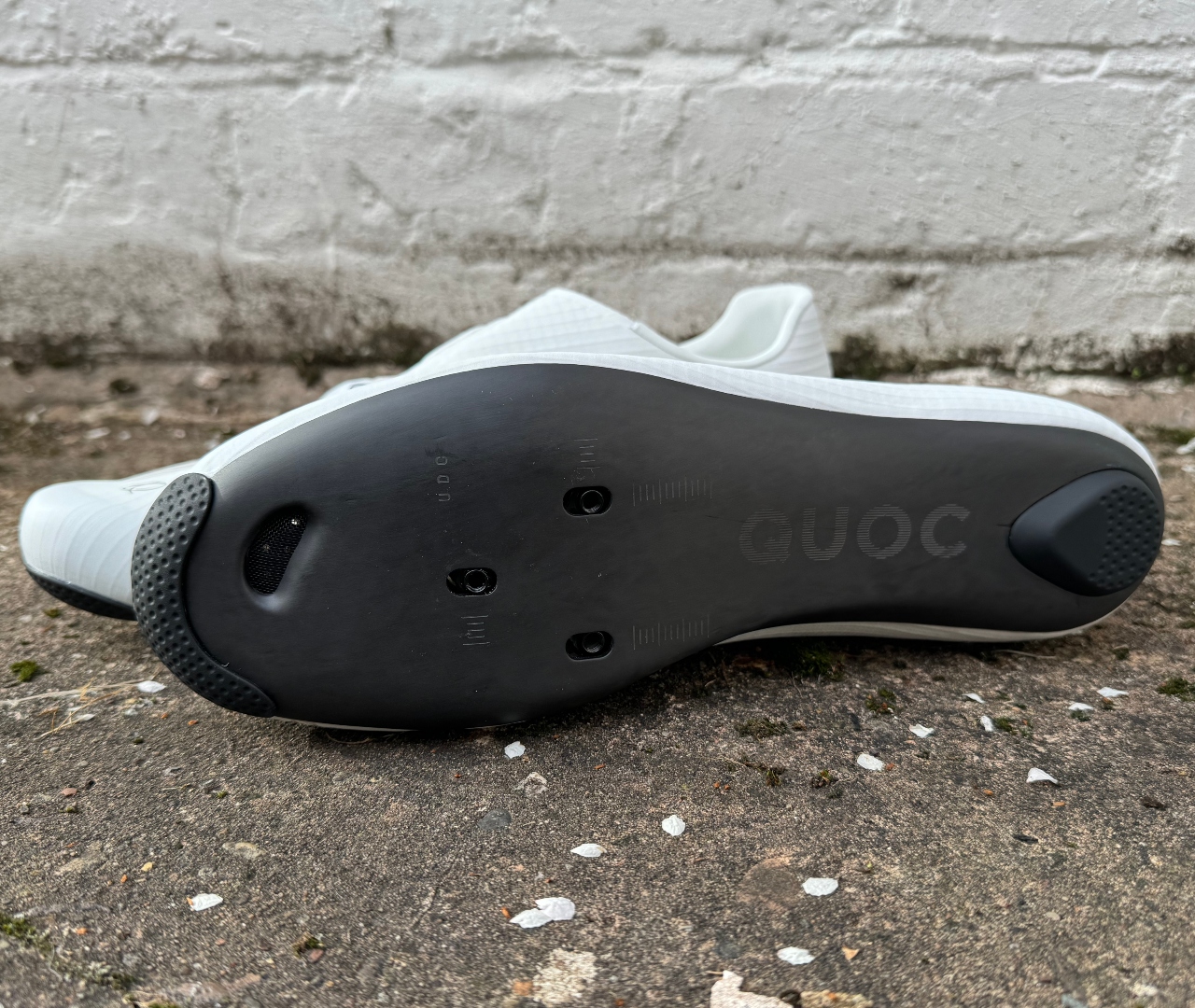
At £320 the Quoc M3 Air shoes are not cheap, a price point that places them firmly in the premium cycling shoe bracket. However, they are less expensive than much of the competition, including the Specialized S-Works Torch (£350), Shimano RC903 S-Phyre (£349), Fizik Vento Infinito (£350), Sidi Shot 2 (£395) and DMT KR0 (£369). Given that weight and stiffness between all of these are fairly similar or pretty much unnoticeable, it really comes down to design/style preference and fit. The Quoc M3 Air shoes are wider than the likes of Shimano, Fizik, DMT and Sidi, but offer a bit less heel grip than the Shimano and DMT. The Specialized are a bit wider in the forefoot but similar on the heel.
Based purely on specs alone, the Quoc M3 Air shoes, although expensive, offer decent value compared to their direct competitors. However, the best cycling shoes you’ll ever buy are the ones that fit.
Conclusion
The Quoc M3 Air shoes are great high-end race shoes with superb stiffness and power transfer, with pretty good comfort and foot support too. The price is high but fair when compared to the competition, making these an attractive option if you’re in the market for a pair of high-end cycling shoes.
Specs
Three-bolt cleat pattern with fore/aft adjustment
Adjustable insole with low, mid and high arch support
Vibration absorbing insole with ball-of-foot pressure point release
Two retention dials for closure
One piece tongue to reduce pinching
Wider fit than many competitors
Mesh panels for cooling
Tongueless wrap design
White only colour available
Sizes 38-47 (full sizes only)
Weight: 506g for size 45 pair (464g claimed for size 42 pair)







